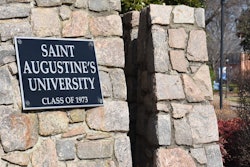Minority Bachelor’s Degrees on the Rise:
Number of African American Bachelor’s Degree Holders Tops 100,000
by Phaedra Brotherton
In the 1999-2000 academic year, the number of African Americans earning bachelor’s degrees topped the 100,000 mark — coming in at 103,874, an increase of 8,350 degrees, or 8.74 percent, over 1997-1998 figures. After promising gains in 1997-1998 in producing degree holders, historically Black colleges and universities witnessed a slight decline in the number of African American bachelor’s degree holders — total of 50 fewer degrees overall, a drop from 25,386 to 25,336. Of the top 10
HBCUs in 1997-1998, five experienced a decrease in the number of degree holders produced. North Carolina Central experienced the largest decline — producing 85 fewer degrees, for a 13 percent decrease.
In 1965, “you still had 60 percent of Blacks going to HBCUs,” says Dr. Reginald Wilson, senior scholar emeritus for the American Council on Education. In the past 40 years that number has steadily decreased, he says. More financial aid available at non-HBCUs and the breaking of family traditions to attend a certain HBCU has cut into African American enrollment at HBCUs. It used to be that if a grandfather went to Fisk, the father would go and then the son,” explains Wilson. “That’s not happening anymore. More Black students are going to (traditionally White institutions) because the opportunity to go is there.”
In addition, many of the HBCUs find themselves in the ironic position of having more White students among their graduates.
“Affirmative action is happening in the Black institutions,” says Wilson. Many thought that desegregation only applied to the predominantly White institutions. Not so, he says. “You are finding Whites getting scholarships and funding to go to historical Black institutions. In fact, some institutions that are historically Black have become predominately White institutions.” He cites as an example West Virginia State, which he says now has an 80 percent White student population.
But HBCUs still produce a large percentage of today’s Black bachelor’s degree recipients. Out of the top 10 producers of Black baccalaureate degrees, eight are HBCUs. In the top 20, 12 are HBCUs.
Florida A&M University remained the No. 1 producer of African American bachelor’s degrees and experienced a 8.99 percent increase since 1997-1998. Other HBCUs from 1997-1998 posting gains were Southern, Hampton, Morgan State and Jackson State universities.
New entrants on the top 10 HBCU list were South Carolina State, which experienced a 21.6 percent increase since 1997-1998 and Tennessee State University, which experienced a 31.8 percent increase during the same time frame.
Traditionally White Institutions (TWIs) continue the trend of increasingly graduating more Black bachelor’s degree recipients. This year’s top 50 TWIs, produced 2,176 more Black bachelor’s degree holders, for an 11.4 percent increase over 1997-1998.
Eight of the schools in last year’s top 10 increased the number of degree holders. The big winner was Southern Illinois University, which produced 88 more degree holders for an increase of 16.9 percent over 1997-1998. University of Maryland College Park produced 77 more degree holders for a 14.6 percent increase. Other schools making large gains were Florida International University, with 51 more degrees, for a 9.8 percent increase and Georgia State University, with 48 more degrees, for 7.4 percent increase.
Of the top 10 TWIs that posted losses this year, CUNY-City College lost the most, producing 94 fewer degrees and experiencing an 18.9 percent decrease. Another New York-based institution, The College of New Rochelle, also produced fewer degrees — 47, for an 8 percent decrease. Entering the top 10 TWI producers in 1999-2000 was Florida State University, which increased its number of degree holders by 102 — garnering a 21.9 percent increase.
Affirmative action continues to play a major role in the increasing number of Blacks going to predominantly White institutions, says Wilson. But the future of affirmative action remains uncertain as individual states challenge its lawfulness and vote on various propositions — such as those in Washington and California. In general, the courts have been conservative when ruling on affirmative action; but rules vary in different states and sometimes in different departments of the same institution, says Wilson, who believes that eventually the U.S. Supreme Court may have to deal with the issue.
Despite the good news, says Wilson, there is another disturbing trend that has been happening with all the top Black bachelor’s degree producers — the disparity between Black women earning bachelor’s degrees and Black men earning the degrees (see Black Issues, May 10).
In 1999-2000, of the degrees awarded at the top three bachelor’s producing HBCUs, Black men accounted for just 37.4 percent (Florida A&M University), 33.8 percent (Southern University and A&M College), and 33.4 percent (Howard University). Looking at the percentage in non-HBCUs, the statistics are even more grim: At Chicago State University, Black men received 23.6 percent of bachelor’s degrees awarded to African Americans; at Georgia State University and Temple University, Black men accounted for 25.4 percent and 24.1 percent respectively of African American bachelor’s degrees awarded. Clearly much work remains to be done. But overall the growing number of Blacks, Hispanics, Asians and American Indians receiving bachelor’s degrees is encouraging. In 1999-2000, the number of minority graduates increased 14 percent over 1997-1998. While all groups experienced increases, Hispanics experienced the largest increase — 17,381 more degrees than in 1997-1998 — a 31.8 percent increase, turning around the numbers from 1997-1998 when Hispanics experienced a decline in the number of degrees from 1996-1997. Other groups experienced increases as well — American Indians earned 676 more degrees than in 1997-1998 for an 8.78 percent increase and Asians earned 5,444 more degrees for a 7.8 percent increase.
© Copyright 2005 by DiverseEducation.com















